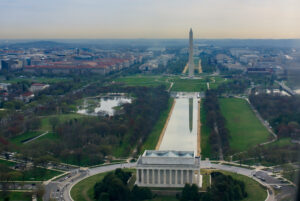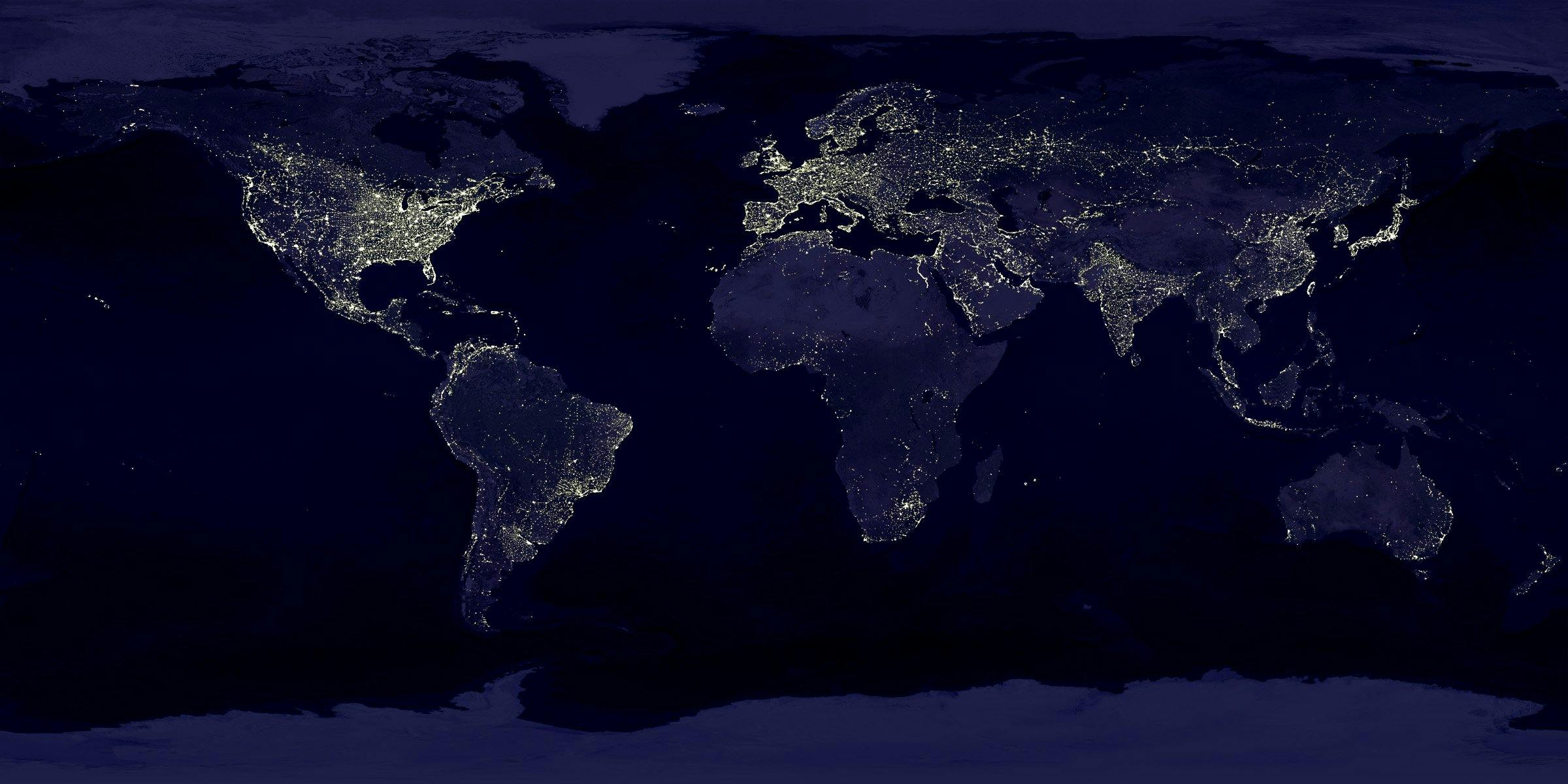
The culture of the United States encompasses various social behaviors, institutions, and norms, including forms of speech, literature, music, visual arts, performing arts, food, sports, religion, law, technology, as well as other customs, beliefs, and forms of knowledge. American culture has been shaped by the history of the United States, its geography, and various internal and external forces and migrations.[1]
America’s foundations were initially Western-based, and primarily English-influenced, but also with prominent French, German, Greek, Irish, Italian, Scottish, Welsh, Jewish, Polish, Scandinavian, and Spanish regional influences. However, non-Western influences, including African and Indigenous cultures, and more recently, Asian cultures, have firmly established themselves in the fabric of American culture as well. Since the United States was established in 1776, its culture has been influenced by successive waves of immigrants, and the resulting “melting pot” of cultures has been a distinguishing feature of its society. Americans pioneered or made great strides in musical genres such as heavy metal, rhythm and blues, jazz, gospel, country, hip hop, and rock ‘n’ roll. The “big four sports” are American football, baseball, basketball, and ice hockey. In terms of religion, the majority of Americans are Protestant or Catholic. The irreligious element is growing. American cuisine includes popular tastes such as hot dogs, milkshakes, and barbecue, as well as many other class and regional preferences. The most commonly used language is English, and English was made the official language of the United States on March 1, 2025, although the United States did not have an official language for most of its history.[2] Distinct cultural regions include New England, Mid-Atlantic, the South, Midwest, Southwest, Mountain West, and Pacific Northwest.[3]
Politically, the country takes its values from the American Revolution and American Enlightenment, with an emphasis on liberty, individualism, and limited government, as well as the Bill of Rights and Reconstruction Amendments. Under the First Amendment, the United States has the strongest protections of free speech of any country.[4][5][6][7] American popular opinion is also the most supportive of free expression and the right to use the Internet.[8][9] The large majority of the United States has a legal system that is based upon English common law.[10] According to the Inglehart–Welzel cultural map, it leans greatly towards “self-expression values“, while also uniquely blending aspects of “secular-rational” (with a strong emphasis on human rights, the individual, and anti-authoritarianism) and “traditional” (with high fertility rates, religiosity, and patriotism) values together.[11][12][13] Its culture can vary by factors such as region, race and ethnicity, age, religion, socio-economic status, or population density, among others. Different aspects of American culture can be thought of as low culture or high culture, or belonging to any of a variety of subcultures. The United States exerts major cultural influence on a global scale and is considered a cultural superpower.[14][15]
Languages
More than 300 languages nationwide, and up to 800 languages in New York City, besides English, have native speakers in the United States—some are spoken by indigenous peoples (about 150 living languages) and others imported by immigrants. English is not the first language of most immigrants in the US, though many do arrive knowing how to speak it, especially from countries where English is broadly used.[32] This not only includes immigrants from countries such as Canada, Jamaica, and the UK, where English is the primary language, but also countries where English is an official language, such as India, Nigeria, and the Philippines.[32]
According to the 2000 census, there were nearly 30 million native speakers of Spanish in the United States. Spanish has official status in the Commonwealth of Puerto Rico, where it is the primary language spoken, and the state of New Mexico; numerous Spanish enclaves exist around the country as well.[33]
Customs and traditions
Iconic American dishes such as apple pie, donuts, fried chicken, American pizza, hamburgers, and hot dogs derive from the recipes of various immigrants and domestic innovations.[35][36] French fries, Mexican dishes such as burritos and tacos, and pasta dishes freely adapted from Italian sources are consumed.[37]
The types of food served at home vary greatly and depend upon the region of the country and the family’s own cultural heritage. Recent immigrants tend to eat food similar to that of their country of origin, and Americanized versions of these cultural foods, such as Chinese American cuisine or Italian American cuisine often eventually appear. Vietnamese cuisine, Korean cuisine, and Thai cuisine in authentic forms are often readily available in large cities. German cuisine has a profound impact on American cuisine, especially Midwestern cuisine; potatoes, noodles, roasts, stews, cakes, and other pastries are the most iconic ingredients in both cuisines.[38] Dishes such as the hamburger, pot roast, baked ham, and hot dogs are examples of American dishes derived from German cuisine.[39][40]
Americans generally prefer coffee over tea, and more than half the adult population drinks at least one cup of coffee per day.[41] Marketing by U.S. industries is largely responsible for making orange juice and milk (now often fat-reduced) ubiquitous breakfast beverages.[42] During the 1980s and 1990s, the caloric intake of Americans rose by 24%;[37] and frequent dining at fast food outlets is associated with what health officials call the American “obesity epidemic“. Highly sweetened soft drinks are popular; sugared beverages account for 9% of the average American’s daily caloric intake.[43]
The American fast food industry, the world’s first and largest, is also often viewed as being a symbol of U.S. marketing dominance. Companies such as McDonald’s,[44] Burger King, Pizza Hut, Kentucky Fried Chicken, and Domino’s Pizza among others, have numerous outlets around the world,[45] and pioneered the drive-through format in the 1940s.[46]
Sports
In the 1800s, colleges were encouraged to focus on intramural sports, particularly track and field, and, in the late 1800s, American football. Physical education was incorporated into primary school curriculums in the 20th century.[48]
Baseball is the oldest of the major American team sports. Professional baseball dates from 1869 and had no close rivals in popularity until the 1960s. Though baseball is no longer the most popular sport,[49] it is still referred to as “the national pastime“.
Ice hockey is the fourth-leading professional team sport. Always a mainstay of Great Lakes and New England-area culture, the sport gained tenuous footholds in regions like the American South since the early 1990s, as the National Hockey League pursued a policy of expansion.[50]
Soccer is very popular as a participation sport, particularly among youth, and the US national teams are competitive internationally. A twenty-six-team (with four more confirmed to be added within the next few years) professional league, Major League Soccer, plays from March to October, but its television audience and overall popularity lag behind other American professional sports.[51]
Soccer is very popular as a participation sport, particularly among youth, and the US national teams are competitive internationally. A twenty-six-team (with four more confirmed to be added within the next few years) professional league, Major League Soccer, plays from March to October, but its television audience and overall popularity lag behind other American professional sports.[51]
Namesv
Creativity has also long been a part of American naming traditions and names have been used to express personality, cultural identity, and values.[59][60] Naming trends vary by race, geographic area, and socioeconomic status. African Americans, for instance, have developed a very distinct naming culture.[60] Both religious names and those inspired by popular culture are common.[61]
Fashion and dress
Blue jeans were popularized as work clothes in the 1850s by merchant Levi Strauss, a German-Jewish immigrant in San Francisco, and adopted by many American teenagers a century later. They are worn in every state by people of all ages and social classes. Along with mass-marketed informal wear in general, blue jeans are arguably one of US culture’s primary contributions to global fashion.[62]
Marriage and divorce
State law provides for child support where children are involved, and sometimes for alimony. “Married adults now divorce two-and-a-half times as often as adults did 20 years ago and four times as often as they did 50 years ago… between 40% and 60% of new marriages will eventually end in divorce. The probability within… the first five years is 20%, and the probability of its ending within the first 10 years is 33%… Perhaps 25% of children (ages 16 and under) live with a stepparent.”[70]
History
Origins, development, and spread
The European roots of the United States originate with the English and Spanish settlers of colonial North America during British and Spanish rule. The varieties of English people, as opposed to the other peoples on the British Isles, were the overwhelming majority ethnic group in the 17th century (the population of the colonies in 1700 was 250,000) and were 47.9% of percent of the total population of 3.9 million. They constituted 60% of the whites at the first census in 1790 (%: 3.5 Welsh, 8.5 Scotch Irish, 4.3 Scots, 4.7 Irish, 7.2 German, 2.7 Dutch, 1.7 French, and 2 Swedish).[16] The English ethnic group contributed to the major cultural and social mindset and attitudes that evolved into the American character. Of the total population in each colony, they numbered from 30% in Pennsylvania to 85% in Massachusetts.[17] Large non-English immigrant populations from the 1720s to 1775, such as the Germans (100,000 or more), Scotch Irish (250,000), added enriched and modified the English cultural substrate.[18]
Jeffersonian democracy was a foundational American cultural innovation, which is still a core part of the country’s identity.[19] Thomas Jefferson’s Notes on the State of Virginia was perhaps the first influential domestic cultural critique by an American and was written in reaction to the views of some influential Europeans that America’s native flora and fauna (including humans) were degenerate.[19]
Non-indigenous cultural influences have been brought by historical immigration, especially from Germany in much of the country,[20] Ireland and Italy in the Northeast, and Japan in Hawaii. Latin American culture is especially pronounced in former Spanish areas but has also been introduced by immigration, as have Asian American cultures (especially in the Northeast and West Coast regions). Caribbean culture has been increasingly introduced by immigration and is pronounced in many urban areas. Since the abolition of slavery, the Caribbean has been the source of the earliest and largest Black immigrant group, a significant source of growth of the Black population in the U.S. and has made major cultural impacts in education, music, sports and entertainment.[21]
Indigenous cultures remains strong in both reservation and urban communities, including traditional government and communal organization of property now legally managed by Indian reservations (large reservations are mostly in the West, especially Oklahoma, Arizona and South Dakota). The fate of indigenous cultures after contact with Europeans is quite varied. For example, Taíno culture in U.S. Caribbean territories is undergoing cultural revitalization and, like many Native American languages, the Taíno language is no longer spoken. By contrast, the Hawaiian language and culture of the Native Hawaiians has survived in Hawaii alongside that of immigrants from the mainland U.S. (starting before the 1898 annexation) and to some degree Asian immigrants. Indigenous Hawaiian influences on mainstream American culture include surfing and Hawaiian shirts. Most languages native to what is now U.S. territory are endangered.[22]
American culture includes both conservative and liberal elements, scientific and religious competitiveness, political structures, risk taking and free expression, materialist and moral elements. Despite certain consistent ideological principles (e.g. individualism, egalitarianism, and faith in freedom and republicanism), American culture has a variety of expressions due to its geographical scale and demographics.[23]
As a melting pot of cultures and ethnicities, the U.S. has been shaped by the world’s largest immigrant population. The country is home to a wide variety of ethnic groups, traditions, and values,[24][25] and exerts major cultural influence on a global scale, with the phenomenon being termed Americanization.[26][27][14][15]
